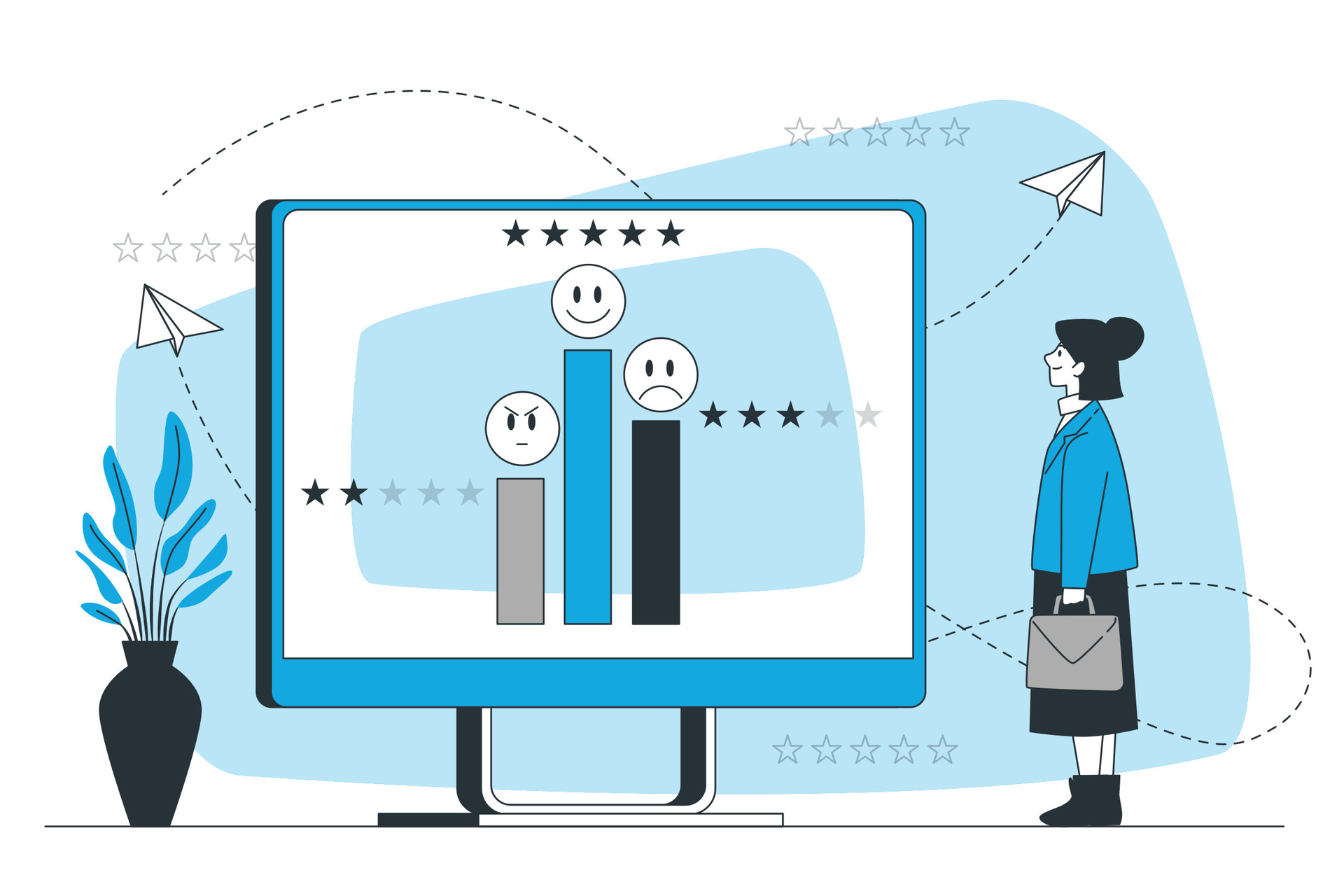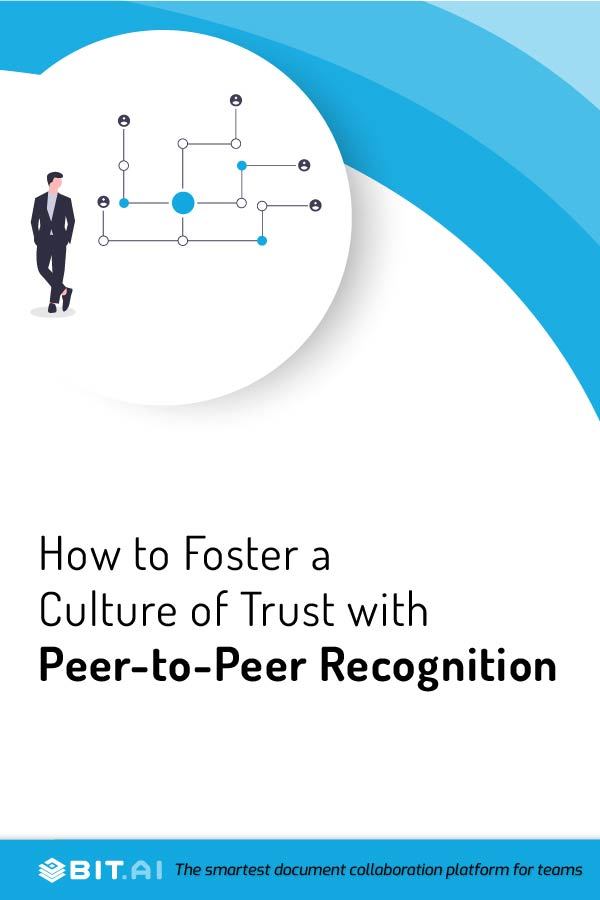The need to feel recognized and accepted is innate in all of us. It’s only human to crave a sense of belonging and camaraderie, whether personal or professional. Validation can be a positive driving force that keeps us moving forward.
As social beings, it has been proven time and time again that we thrive in places where we are affirmed and recognized. This especially holds true in the work environment.
An organization can only be as good as the people that it is made up of. This is why so much emphasis and effort are put into employee recruitment and training. Large corporations and successful conglomerates invest a lot in their employees and workers.
To ensure that optimum efficiency and productivity are attained, a healthy work environment must be maintained. This cannot be achieved merely with manager and leadership feedback, peer-to-peer recognition needs to be prioritized.
Not only does peer-to-peer recognition help in enhancing engagement, but it also boosts team morale and increases overall productivity and efficiency. All of this eventually has far-reaching impacts on the working and success of any company or organization.
Continue reading to understand just what peer-to-peer recognition is, why it matters in the workspace, as well as the best practices to build peer-to-peer recognition so it benefits your line of work.
What is Peer Recognition? (Definition)
Peer recognition is a demonstration of appreciation between employees. It is the appreciation of colleagues for the work that they do. It is a way for co-workers to recognize and celebrate each other’s success for a job well done.
Peer-to-peer recognition is a genuine expression of commendation towards fellow employees in the workplace. It does not necessarily have to be a grand gesture, it can even be a small shout-out because it’s often the little things that add up to make the most impact. At the same time, going the extra mile with initiatives such as company awards for achievement is also a smart move.
The reason for peer-to-peer recognition can be anything that adds value because the end goal is to create a positive workspace that boosts employee morale.
Whether it’s striving towards a deadline for an important project or the day-to-day designated work, employees are undergoing a constant level of stress that only fellow employees can truly understand. This shared experience is what makes peer-to-peer recognition especially meaningful.
When authentic recognition comes hand in hand with incentives, it can create a team that is motivated, dedicated, supportive, and resilient.
Why Does Peer Recognition Matter In Workplace? (Importance)
When viewed broadly, something like peer-to-peer recognition may not seem very significant in the grand scheme of things, but the impact that it has is actually very profound. Here are some of the reasons why peer-to-peer recognition matters so much in the workplace.
1. Builds Trust Between Employees
Positive recognition between employees will not only boost employee morale, but also build a level of trust that is crucial for teamwork. For any team to work well together and be efficient, trust is a necessary foundation. Thus, genuine acknowledgment builds trust between employees, which has a positive impact on work efficiency and in the long run, benefits the company.
2. Fosters Healthy Company Culture
Healthy company culture is one that is inclusive and empathetic. Encouraging peer-to-peer recognition will make employees feel appreciated and create a sense of connection and belonging. This strengthens work relationships, especially in times of crisis and unforeseen challenges. All of this amounts to creating a healthy company culture.
3. Improves Performance
A dedicated and efficient team makes a world of difference, especially in terms of performance. Peer-to-peer recognition can drastically increase motivation which has a direct impact on performance. It also fosters a certain amount of respect for each other’s work and improves cooperation. So, in more ways than one, it affects the performance of employees in a positive way.
Read More: 40+ Motivational Quotes for Work to Boost Performance!
4. Decreases Chances of Conflict
Workplace conflict is inevitable, especially when the nature of work tends to be stressful. When working towards a deadline and tackling obstacles, tensions can rise which can result in certain negative outcomes. A company that encourages peer-to-peer recognition creates employees that have a strong foundation of respect and appreciation toward each other. This reduces the chances of conflicts and even on the occasions that confrontations do occur, they can be resolved in a professional manner.
5. Increase Customer Satisfaction
Peer-to-peer recognition has a dramatic effect on employee wellness (physical and mental), efficiency, and ultimately performance. When the quality of work improves, the rate of customer satisfaction also increases.
 With peer-to-peer recognition, employees feel motivated to strive for better results and it is reflected in the way they engage with customers. Promoting peer recognition is thus the unseen catalyst for improved customer satisfaction.
With peer-to-peer recognition, employees feel motivated to strive for better results and it is reflected in the way they engage with customers. Promoting peer recognition is thus the unseen catalyst for improved customer satisfaction.
6. Reduces Employee Turnover
Employee retention is a larger issue in many companies than you might suspect. The primary complaint that employees have is usually rooted in an unsatisfactory work environment that leaves them unfulfilled. One way this can be tackled is with peer-to-peer recognition.
Peer recognition builds a work culture where employees feel appreciated and validated which is the key to having a workforce that is loyal and dedicated to a company’s success.
Implementing a great peer recognition program that is inclusive and effective can seem quite challenging. If you’re at a loss as to where to start, we’ve curated a list of the best practices to keep in mind while building a peer-to-peer recognition program best suited for your company or organization.
How To Build A Peer To Peer Recognition Program (Best Practices)
1. Simplicity is key
A successful peer recognition program does not need to be complicated or sophisticated in order to work. Rather, it’s best to keep it quick, simple, and impactful. It’s even better if you use a single platform that can be easily integrated into other programs so that employees can have a seamless and hassle-free experience.
Everybody already has a lot on their plate, it would be counterproductive to burden someone with an initiative that is meant to be rewarding. So, simplicity is key to a successful peer recognition program.
2. Inclusivity and Accessibility
Most companies that do have a peer recognition program or initiative often forget to factor in inclusivity and accessibility. A good peer recognition program is one that gives all employees a platform to give as well as receive recognition.
A work culture that values inclusivity harbors trust and inculcates a sense of belonging amongst peers. This results in a shared feeling of connectivity. An inclusive and accessible program will make employees feel supported and encouraged which will inevitably reflect in the quality of their work.
3. Clear-Cut Objectives
Before starting any program of any nature, it is best to map out your end goal and work towards it. Everyone onboard should be able to understand the purpose behind your initiative in order for it to be successful.
Defining your objectives and what you hope to achieve with your peer recognition program will help everyone onboard understand what aspect of their co-worker’s performance should garner praise. This will set off the momentum of the entire program and ensure that the objectives are met.
Read More: Project Objectives: What are they & How to Write them Effectively?
4. Collect Input
When building your peer-to-peer recognition program, a smart move would be to actually ask employees what motivates them, instead of taking a shot in the dark and guessing what might work. You can ask opinions through a survey, an email, or perhaps even an interview.
 However, it’s best to be discreet and if you can make such inquiries anonymous, that would garner a more honest response from everyone. A list of possible options can be made from which employees can choose, and judging from the outcome of the results gathered, you can build a peer recognition program best suited for your company.
However, it’s best to be discreet and if you can make such inquiries anonymous, that would garner a more honest response from everyone. A list of possible options can be made from which employees can choose, and judging from the outcome of the results gathered, you can build a peer recognition program best suited for your company.
5. Practice Public Recognition
Although employees can feel valued with praise during private conversations amongst themselves, receiving public recognition delivers a heightened level of validation. Make sure the platform that you create when building your peer-to-peer recognition program caters to giving public recognition to employees.
It can either be in the form of companywide awards or a companywide newsfeed. Public recognition fosters healthy motivation and also instills in employees a desire to emulate exemplary behavior.
6. Customize
People feel like they matter when gestures are heartfelt. In the same way, your peer recognition program should be genuine for it to have an impact on employees. So, a tip is to customize it uniquely. It could be the little things like not sending the same generic copy-pasted email to everyone.
Find ways to make employees feel valued by putting in extra thought while you build your peer recognition program. Employees will be motivated to work harder when they feel appreciated and supported.
7. Emphasis on Specificity
The most efficient peer recognition programs are the ones that are specific in nature. Employees should know exactly what they did right to be praised. This will keep everyone informed of the do’s and don’ts in the workplace and positive actions will be emulated from each other resulting in productive and healthy workplace culture.
8. Repetition Matters
You cannot make peer-to-peer recognition a one-time thing. Implementing it once and hoping it will last is just a form of delusion. Just like you need validation from time to time in your personal spaces, it’s no different in professional settings.
It can be a simple initiative such as an ‘employee of the week’ award. You can personalize initiatives to suit your company, but at the end of the day, make sure it results in employees feeling recognized and appreciated whenever they make positive contributions.
9. Lead by Example
Actions speak louder than words, therefore when leaders model positive behavior, employees will definitely follow suit. People in the upper hierarchy at work should be mindful of their words, and their gestures and lead by example. Recognizing team success and taking pride in the team’s work are examples of how leaders can show recognition and appreciation.
10. Provide Incentives
Successful peer-to-peer recognition programs are the ones that come with incentives. You can leverage social and monetary recognition to aid your peer recognition program. It’s human nature to feel motivated when we know benefits are awaiting us. Incentives can be that extra push that employees need to work harder and perform better.
11. Monitor All Levels
By monitoring all levels, we mean your peer recognition program should extend at both the personal as well as team levels. When an employee excels in what they do, give them special recognition; and when people as a team are productive and make a positive contribution, appreciate them as a team. Do not just generalize all accomplishments, rather give credit where credit is due.
12. Keep Track
Now that the important practices to be mindful of when building a peer-to-peer recognition program are mentioned, one more thing to keep in mind is to never lose track of what you’ve already done. Keeping track of the initiatives already applied can help you identify the ones that work and the ones that need improvement or replacement.
Summing It Up!
Given the diverse nature of today’s workforce, peer-to-peer recognition is now more crucial than ever. Competition in all fields of work is increasingly cut-throat with each passing year, so to compete and thrive, attention must be paid to every aspect that can contribute to a company’s success. Thus, peer recognition is not just a concept that should be taken lightly.
A company that practices and incorporates a good peer recognition program creates an ideal work environment where employees feel comfortable engaging in open and effective communication. This builds core values and a strong foundation for the creation of a loyal, dedicated, motivated, resilient, and productive workforce. All of these combined result in not only a successful company but one that has purpose and soul due to its ethical nature.
10 Best Practices To Build a Peer-To-Peer Recognition Program
- Simplity is the key.
- Inclusivity and Accessibility.
- Clear-Cut Objectives.
- Collect Input.
- Practice Public Recognition.
- Customize The Program.
- Emphasis on Specificity.
- Repetition Matters.
- Lead by Example.
- Provide Incentives.
Further Reads:
Why Workplace Collaboration is More Important Than Ever?
What is Cross-Functional Collaboration & How To Build A Team?
Workload Management: Definition, Importance, Process & Tools!
Program Manager Vs. Project Manager : The Key Differences Explained!
Burn-Up Charts: What are they and How to Create One?
Job Aid : What is it & How to Create an Impactful One for Employees?


